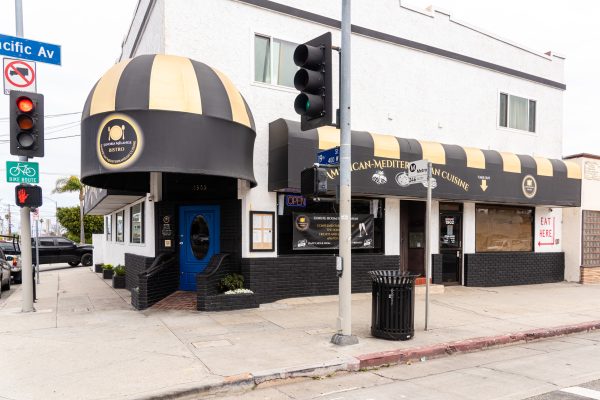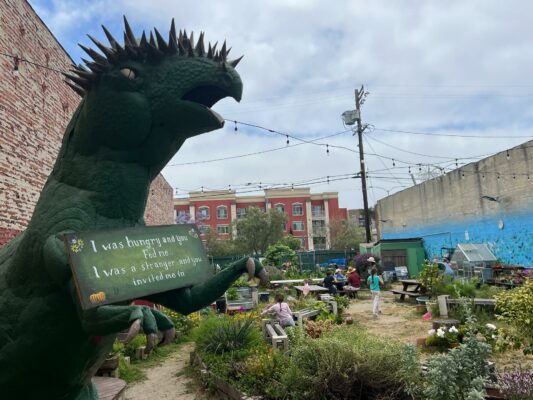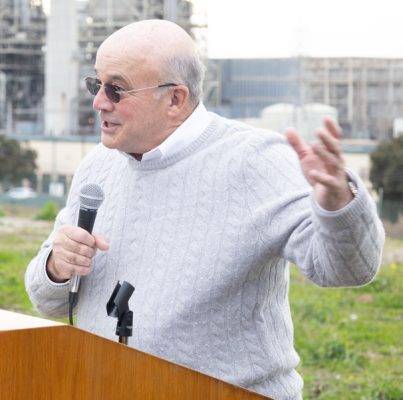
The clock has begun to tick again for the home that time forgot – a funky, 1950s-era apartment complex where the rents stood still as long as landlord Jack Hoy lived.
With Hoy’s passing earlier this year, rental rates for the tenants of the complex, on the corner of Eighth Street and Manhattan Avenue, will move into the 21st century. The new rents will be competitive for lodgings short blocks from the beach, but they will nearly triple in some cases for some renters who had basked in Hoy’s beneficence for decades.
Forty-seven year resident Robi Hutas, a photographer known for his landscapes and his extensive vintage beach volleyball catalogue, will see his rent go from $460 to $1,350 a month in February. He also was asked for a $460 security deposit.
Hutas, 75, doubts he can come up with the scratch. He does handyman duty, everything from cleaning windows and carpeting to upholstery and mini-blinds.
“It doesn’t matter what you do, there is no work,” he said.
“I have no place to go, man. I’m looking, I’m looking all over the place,” he said.
John Miller, a semi-retired landscape and surf photographer and a board member of the Hermosa Beach Historical Society, said it does not look like Hoy left a request for rent control in any documents he left, but Miller was continuing to investigate.
“This is the reason they went for rent control in Santa Monica…You triple the rent on a 75-year-old man, you’re essentially throwing him out on the street,” Miller said.
“He paid enough rent to have bought the building, and they never had to rent his apartment, never had it vacant, hardly did any repairs,” Miller said. “They should be grateful, instead of treating a tenant this way.”
Miller said he hopes the new owners might allow longtime tenants to remain under the old rental terms until they move or pass away.
Phone calls to Hoy’s trustee, longtime friend Adriana Whitney, were not returned by press time.
Property Supervisor Laurie Volpe, of Vitco Properties in Torrance, said she did not know details of the apartments’ new ownership, and although she cannot make decisions about rent increases, she was approached on behalf of Hoy’s old tenants.
Volpe questioned whether many people inheriting an apartment complex would accept rents that might “not even pay their taxes.”
“It’s a really sad, sad thing that they just can’t walk away and think about it as, they had a great run. It bothers me for the deceased,” she said.
“I feel bad, but then again, that was a great break,” Volpe said. “I never got break like that.”
Hoy, a retired aerospace engineer, bought the white, two-story building with 13 irregularly shaped and sized units in the mid-1970s, and did not allow the market price to dictate what he charged for lodging.
A few months after Hoy purchased the building, Hutas said he received a little envelope from his new landlord with an apologetic note – rent was being raised a whopping $20. Six or seven years later, another envelope arrived. “You know what he raised it? Another twenty bucks,” Hutas said. “I mean, how beautiful can you get?”
Hutas said that someone once asked Hoy point-blank why he didn’t raise the rent. “He said, ‘Because I don’t need it.’ Are you believe that? I don’t need it! They just shook their head. They didn’t get it.”
Hoy lived the good life alongside his neighbor-tenants, riding his bicycle, playing volleyball and chess, and donning a warm red jacket once a year to fish for salmon and halibut in Alaska, bringing back his haul for a fish fry in the apartments’ courtyard.
Time stood still until a couple of years ago, when a cancer in Hoy’s neck began to spread, taking his health as it went. In September Hoy passed away, at home, in the bed of his upstairs unit facing the ocean, at age 73.









